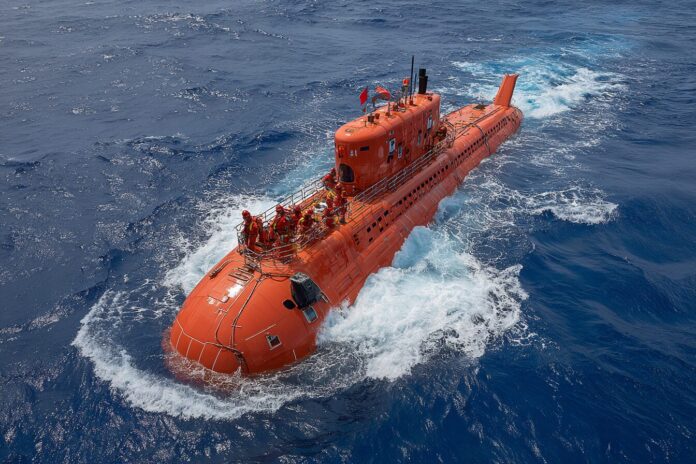Discovering Life Where None Was Expected
Most importantly, one of science’s most thrilling frontiers has been illuminated by breathtaking new footage from the depths of the Mariana Trench. This remarkable video documentation shows thriving animal communities existing nearly 10 kilometers (6 miles) beneath the ocean’s surface. Because these discoveries challenge many established norms about the limits of life, they have captured global attention from marine biologists to environmental enthusiasts.
Beyond that, the compelling evidence provided by the Chinese submersible expedition—led by the innovative team behind the “Fendouzhe” or “Striver”—demonstrates that life flourishes in unexpected places. In addition, research results presented in several videos, including those on YouTube, offer detailed visual insights into the captivating and diverse species that inhabit these remote undersea worlds. Therefore, each new discovery not only reshapes our understanding of biology but also highlights the resilience inherent in even the simplest organisms.
The Discovery: A Closer Look at Earth’s Deepest-Habitat Animals
The extraordinary footage captured during 23 deep descents in 2024 and 2025 reveals vast colonies of marine tubeworms and mollusks that thrive in intense pressure and darkness. Most notably, these animal communities inhabit depths ranging from 2,500 to an astonishing 9,533 meters (8,200 to 31,300 feet), thus marking the deepest confirmed animal communities on Earth. Because such extreme habitats were once thought to be barren, this research redefines our likelihood of encountering previously unknown species.
Furthermore, scientists observed that fields of tubeworms can grow up to 30 cm (12 inches) long. Besides that, dense aggregations of bivalves, clams, and other invertebrates display a complex network of life. This intricate ecosystem defies traditional paradigms and pushes the limits of what is considered a habitable environment beneath the Earth’s surface.
The Chemistry of Survival: Life Without Sunlight
Because sunlight does not penetrate these abyssal depths, the animals rely on an alternative form of energy production known as chemosynthesis. Most importantly, this process enables deep-sea organisms to convert chemicals such as methane into the energy required for survival. In this way, life shifts from photosynthesis to a complex network of chemical reactions that fuel their existence.
In addition, the deep-sea creatures have evolved remarkable adaptations to thrive in harsh conditions. Therefore, even though darkness prevails, these species use chemical energy sources to complete their life cycles. This metabolic ingenuity not only provides them with survival advantages but also offers scientists a window into evolutionary tactics that might be applicable in biotechnological innovations.
Rarities and Surprises: New Creatures Caught on Camera
Besides that, the video evidence obtained from modern expeditions adds further layers to this enthralling marine mystery. New footage from NOAA dives, such as the one available on YouTube, reveals mesmerizing behaviors of rare deep-sea species. Most notably, these visuals include a potential new species of jellyfish and other unusual creatures like predatory chitons and swimming isopods.
Moreover, harrowing images from the bottom of the Challenger Deep present a spectrum of extremophiles that have adapted to survive under extraordinary pressures. Because the deep-sea environment is marked by liquid sulfur, carbon dioxide bubbles, and temperatures that hover near freezing, each observation underscores the vast resilience of life. Therefore, these encounters drive further scientific inquiry and invite more extensive exploration into previously uncharted territories.
Implications for Biodiversity, Biotechnology, and Climate Science
Most importantly, the implications of these deep-sea discoveries extend far beyond the realm of visual wonder. The diversity and density of life in these extreme habitats imply a wider variety of biochemical and physiological adaptations than previously assumed. This increases the potential to discover many more species that remain hidden in the ocean’s mysterious abyss.
Because of these profound findings, multidisciplinary research efforts are now focusing on potential applications in biotechnology, medicine, and climate science. In addition, studying the chemical relationships in these unique ecosystems offers clues to Earth’s carbon cycle and helps refine models predicting climate change impacts. Therefore, this research not only enriches our biological knowledge but also opens new avenues for practical scientific advancements.
A Vivid Glimpse Into the Unknown
Because visual documentation plays a crucial role in spreading these discoveries, the availability of deep-sea video content has never been more significant. Recent expeditions by NOAA and international research teams have leveraged platforms like YouTube to transmit real-time footage and extensive documentary features. These efforts provide a valuable resource for both the scientific community and the general public.
In addition, such imagery and video reporting make it possible to witness firsthand the surreal beauty of life in extreme conditions. Most importantly, they inspire renewed curiosity and emphasize the need for ongoing exploration. As new platforms release this stunning content, society at large is better able to appreciate the profound mysteries lurking within Earth’s deepest corners. For example, check out New Footage From the Mariana Trench to dive deeper into these visual narratives.
Conclusion: The Ocean’s Darkest Corners, Now in Light
Because the deep-sea video revelations of 2025 demonstrate that life endures even under crushing pressure and complete darkness, these discoveries are quickly becoming icons of scientific innovation. Most importantly, the exploration into the deep not only broadens our understanding of biodiversity but also challenges long-held assumptions about life on Earth.
Therefore, every journey into the abyss is paving the way for groundbreaking discoveries. In addition, the convergence of advanced submersible technology and international research creates a promising future for unraveling the mysteries of our planet’s underwater realms. As we continue to explore, it becomes increasingly clear that the ocean’s darkest corners are now gradually illuminated by the persistent light of human curiosity and scientific progress.
Reference Links
- Deepest-known animal communities found nearly 10 km below sea – Phys.org
- They found something terrible at the bottom of the Mariana Trench – YouTube
- 20 New Deep Sea Creature Encounters Caught on Camera – YouTube
- 20 New Animal Species Discovered in 2025 – YouTube
- New Footage From the Mariana Trench – YouTube



